One of the best ways to increase your campervan’s ability off-road is by airing down the tires. A semi-deflated tire has a larger contact area with the ground and gets the most traction out of your tires. Deflated tires can also provide a smoother ride over rough terrain. The problem is that nobody really tells you how to air down. So I thought I would cover the specifics of airing down tires for camper vans.
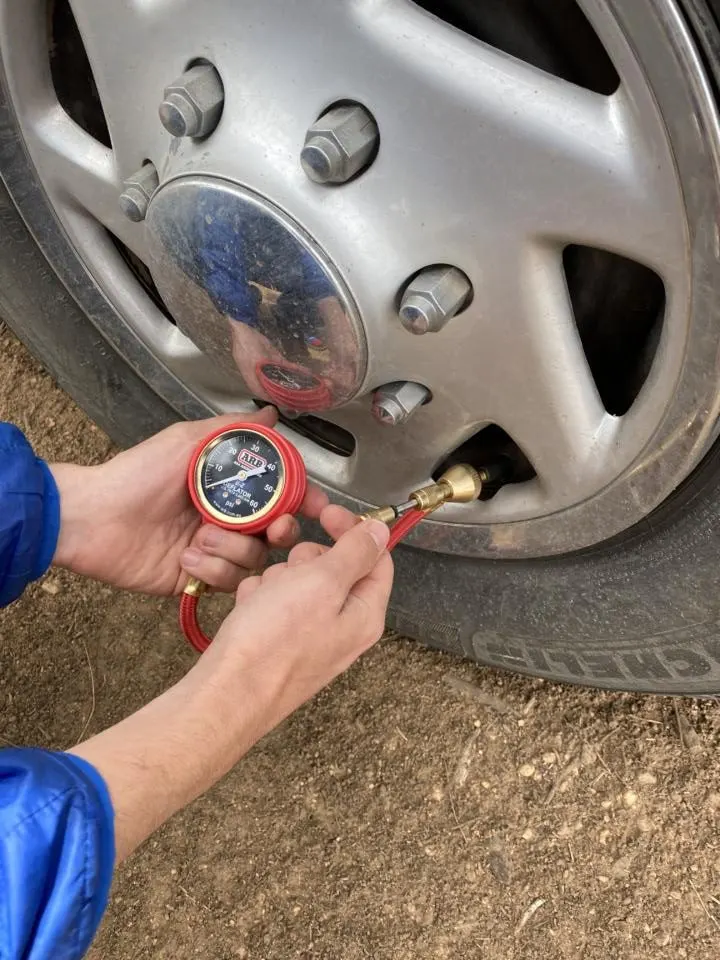
Most of the ‘air-down’ advice out there is for SUV’s and trucks that weigh a fraction of the weight of a campervan. So some guy telling you that he’s running his Toyota Tacoma tires at 20psi means nothing to someone driving a 4-ton campervan. So I will give you advice specifically for airing down tires for camper vans, and how to account for the specifics of your vehicle.
This post may contain affiliate links. Disclosure policy.
Tire Deflators
First of all, you need a dedicated tool for airing down tires for camper vans. The off-roading industry makes a couple great products to safely, easily, and reliably let air out of your tires.
Staun Automatic Tire Deflators are the top-of-the-line brand most trusted by the off-roading industry. They are expensive, but are the fastest and most convenient method. They have quality construction built to last, unlike cheap imitators. The set of 4 allows you to deflate all four tires at the same time, which saves you time. And you don’t need to monitor the PSI, simply set them and wait until they automatically stop at your desired PSI. For a heavy campervan, you need the ones with the highest PSI setting (15-55 PSI).
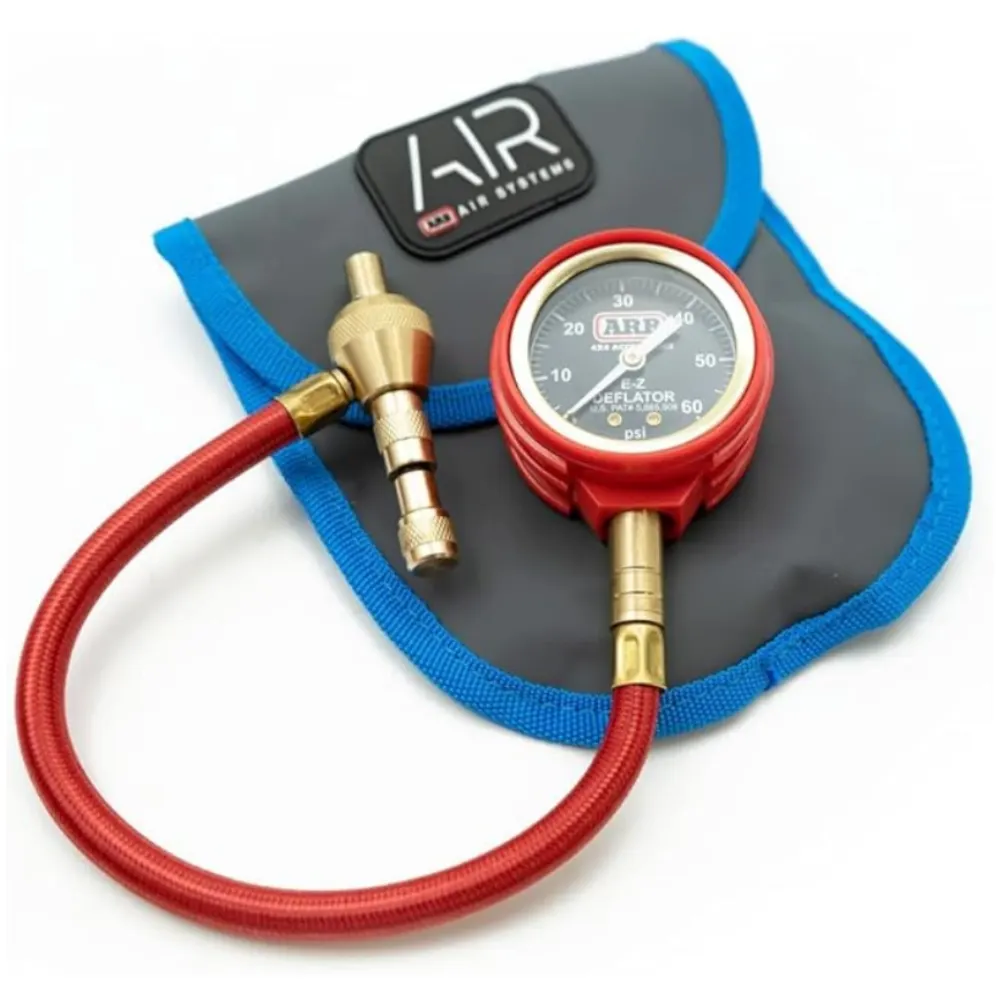
The ARB EZ Tire Deflator offers a more affordable alternative that’s still made by a respected off-roading company (ARB). You need to monitor the PSI manually with the included pressure gauge, and can only do one tire at a time. But all four tires can still be done in under 10 minutes.
Air Compressor
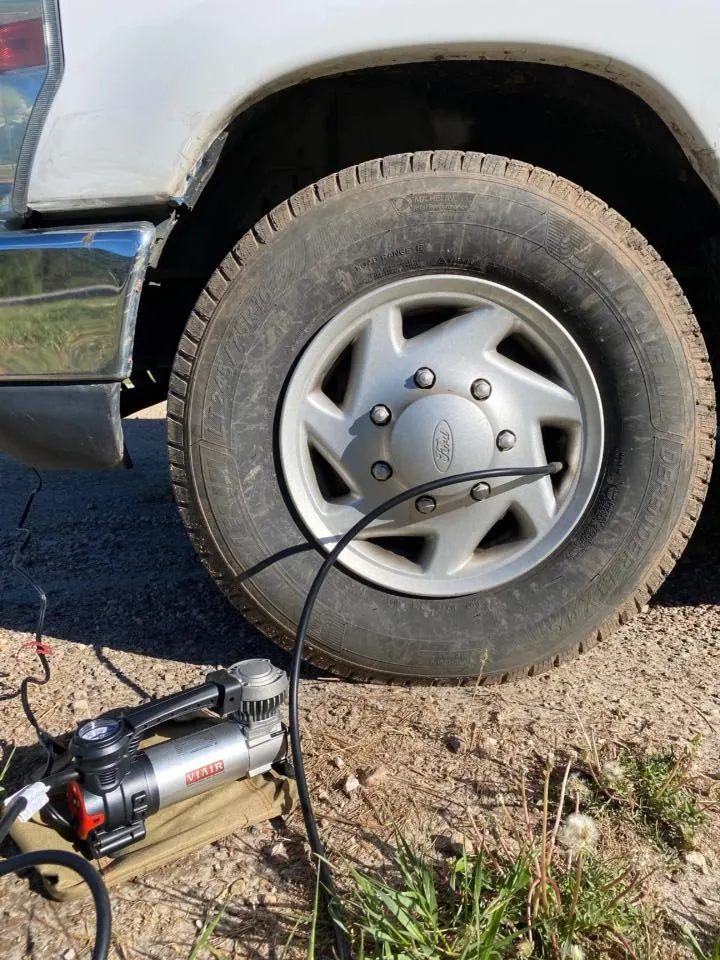
But letting air out is only half of the puzzle of airing down tires for camper vans. You need to be able to re-inflate your tires when you return to pavement. Having a portable air compressor with you is essential for bringing your tires back up to the appropriate pressure.
And for a heavy vehicle like a campervan, you need a robust air compressor that is capable of delivering high PSI. Our campervan’s rear tires call for 80PSI, which is more than double what something like a Jeep Wrangler call for (35PSI).
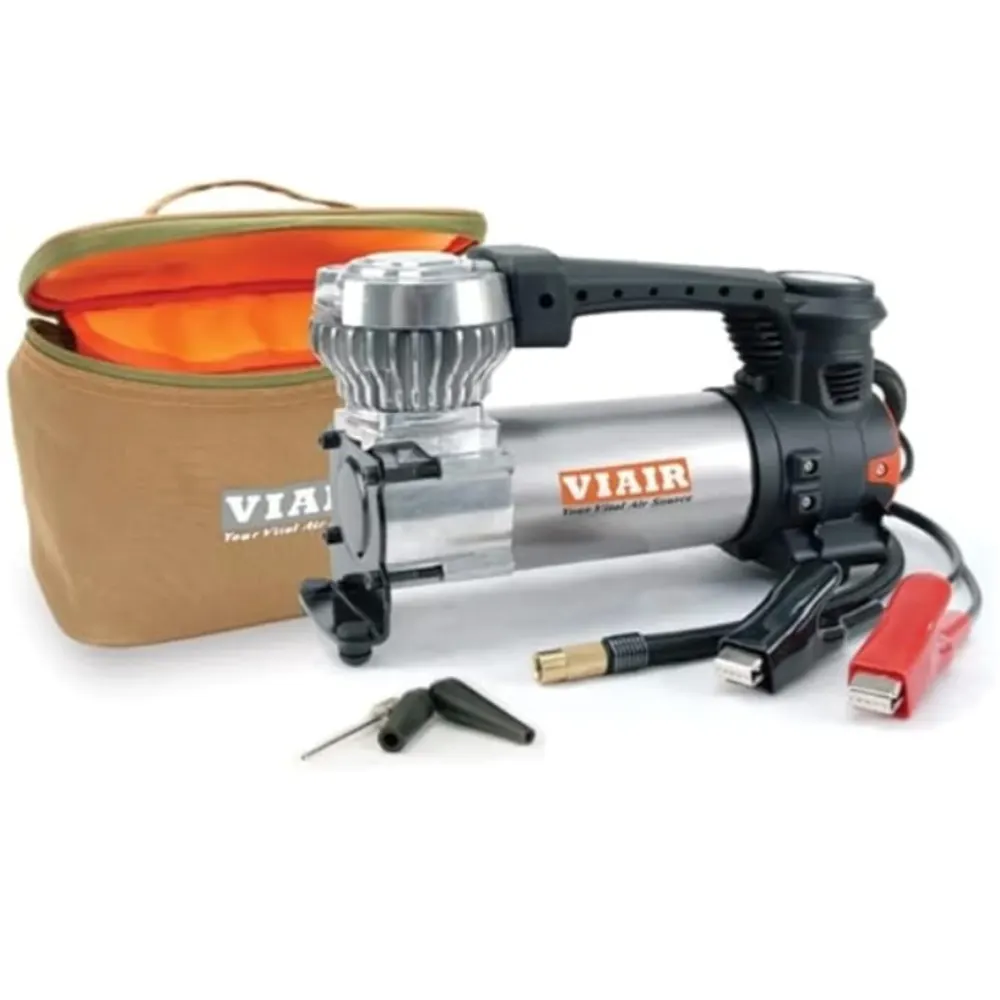
We recommend this Viair 88P Portable Air Compressor. It connects to your vans starter battery and can deliver enough PSI for a large vehicle like a campervan. And the long air hose can actually reach to every tire, even on extended vans.
Note: We have blown a fuse using the Viair Air Compressor, so we suggest having an extra 20 Amp fuse, just in case.
Airing up is usually the longest part of the process. It takes us between 10-20 minutes depending on how much psi we let out.
You can also outfit your vehicle with a CO2 tank, and that would speed up the process. But this is generally overkill for more causal off-roaders.
Best Tips For Airing Down Tires For Camper Vans
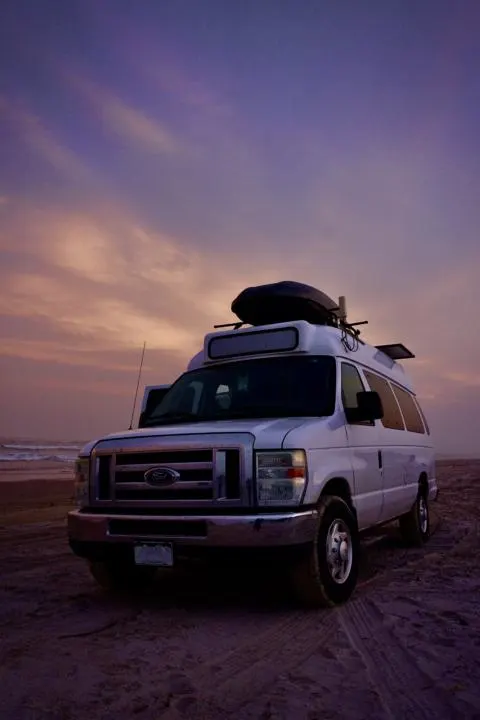
When To Air Down
The best time to air down your tires is when transitioning to low traction or irregular driving conditions. Often mud, sand, and snow are the best low traction situations for aired down tires. You can increase the surface area that your tires keep in contact with the ground. This increases the number of contact points, and improves traction.
Or in the instance of very irregular conditions, like very rocky terrain, a deflated tire will ‘wrap’ itself around the surface of larger rocks and other obstacles. This reduces the likelihood of punctures on the tread area of the tire by spreading out the weight over a larger surface area. However, it can increase the likelihood of punctures to the sidewall, especially for improper tires.
Should You Air Down For All Dirt Roads?
No, you don’t need to air down for all dirt roads. Airing down won’t provide much benefit for many well-maintained and smooth graded dirt or gravel roads. Additionally, people tend to drive fast on smooth dirt roads, and you shouldn’t drive fast on aired down tires.
However, washboarded roads will be a smoother ride on aired down tires. And there is some consensus that airing down helps slow the formation of washboard.
How Much Air Pressure To Let Out?
The best way to explain how much air pressure to release is as a percentage of the factory-recommended tire pressure. You can find the recommended tire pressure on a sticker inside the driver-side door frame, and keep in mind that front and rear sometimes call for different PSI. No matter what kind of vehicle you have, or how much it weighs, these guidelines can help you.
But keep in mind that these are just rule-of-thumb guidelines that may vary based on vehicle, tires, terrain, etc.
Rough Roads/Washboard = 25%
Slickrock = 30-35%
Soft Sand/Snow/Mud = 50% (DRIVE VERY SLOWLY)
So take these percentages and figure out what that calculates to for your specific vehicle. And then write them down, so that you always have the numbers on hand and don’t have to worry about doing the math every time.
For example, our front tires are suggested to be at 60 PSI and our rear tires 80 PSI. For airing down on rough roads/washboard, our front tires (60 x 25% = 45 PSI) should be aired down to 45 PSI. And for our rear tires (80 x 25% = 60 PSI) should be aired down to 60 PSI.
When To Air Back Up
It’s important to air up again once you return to pavement. Driving on pavement with low tire pressure can cause the tires to overheat and result in damage. And taking corners too fast can cause the tire to come completely unseated for the wheel. This is why it’s very important to have a portable air compressor (or similar device) to air back up before hitting the pavement.
The other problem is that driving with aired down tires on pavement wears out the treads faster.
If you have to drive on pavement, try to keep your speed under 35mph and take corners very slow and smooth. And watch out for any potholes. Get to the nearest gas station or mechanic with an air compressor ASAP.
Risks Of Airing Down
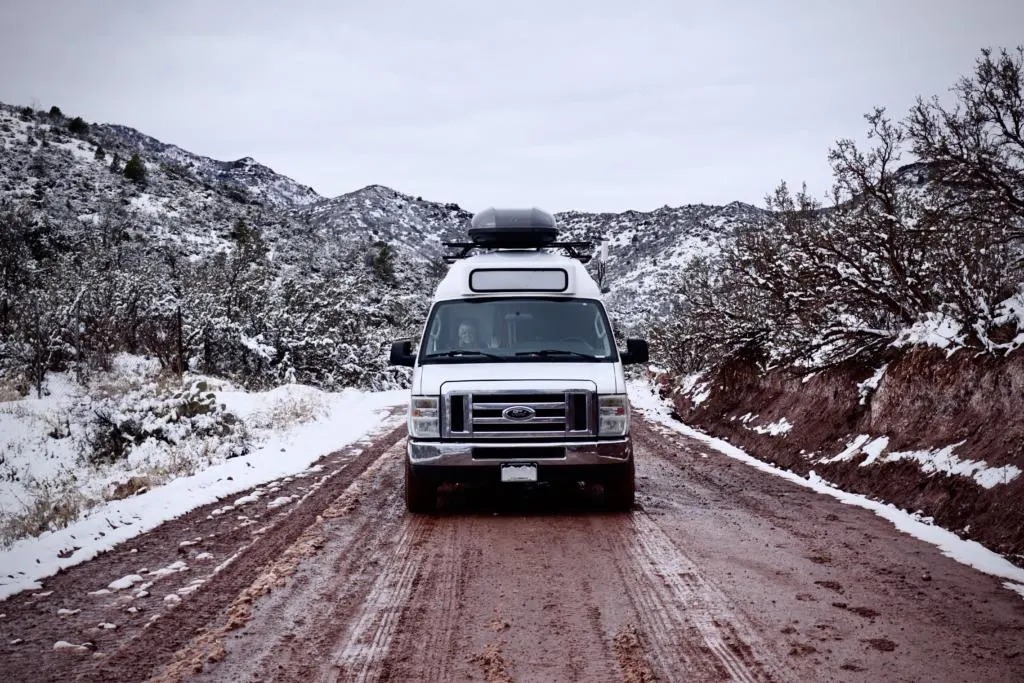
Risk Assessment
Generally, the more air you let out of the tires the more slowly and carefully you have to drive. Less psi = slower speeds and slower cornering.
Sidewall Damage
When your tires are aired down there’s a greater risk of puncturing the sidewall of your tires. The sidewall is closer to the ground, or even touching the ground at really low psi. And not all tires are equal. Some have more durable treads and sidewalls that are better suited to airing down. For campervans we recommend All-Terrain tires, like the BF Goodrich T/A KO2 or Cooper Discoverer AT3.
Tire Separating From Wheel
At very low psi, like 50% or less, it’s possible that the tire can separate from the wheel. Usually on turns, the tire can becomes unseated from the bead. Some rock-crawlers have bead-locks on their rims to prevent this, but in general, nobody is going to have that on their camper van.
Treads Wear Faster
Your tire treads will wear out faster if you drive on pavement with aired down tires. They also probably wear marginally faster off-road too, but nobody really talks about that. Kinda the price to play the game, I suppose.
Do You Have To Air Down All 4 Tires For 2wd?
It depends on what your goal is. If you are looking for a smoother ride, then airing down all four tires will help, regardless of 2wd vs 4wd. But if you are only worried about traction, then you can only air down the two tires that receive power.
Example 1: When driving on a beach you typically don’t need to worry about ride smoothness, but traction is the primary concern. So in a 2wd vehicle you are usually fine just airing down the two tires that receive power.
Example 2: When driving a rocky dirt road, you want to try to smooth out some of the bumps. So airing down all four tires will be beneficial regardless of drivetrain.
Conclusion | Airing Down Tires For Camper Vans
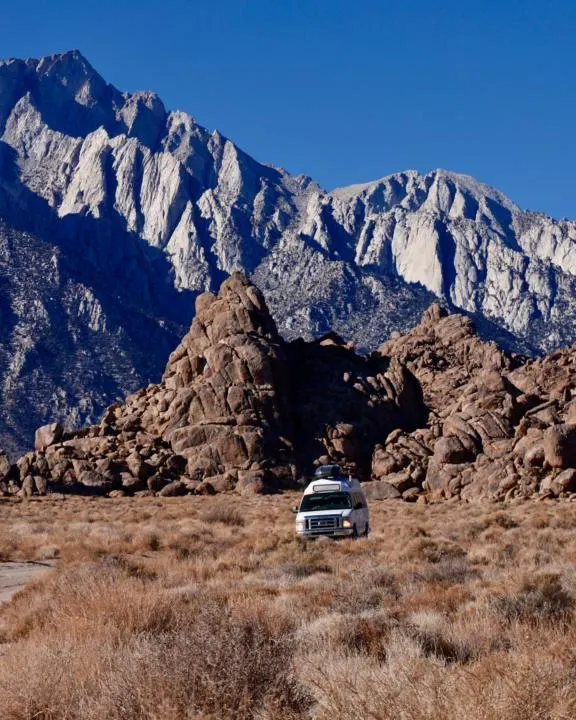
Airing down is annoying.
I’m just gonna say it. Airing down is not that fun and kind of a P.I.T.A. even when you have the proper gear. When you’re ready to blast off on some epic off-road adventure, it can be a real buzzkill to stop the van and air down. It’s easy to ‘skip it’ when you feel like you can make it to your destination without airing down. But to get the benefits of airing down, you actually have to take the time to do it.
And really, airing up is the part that normally takes longer. Getting a tire up to 80PSI takes quite a while with a portable air compressor. When compared to the 35PSI that many smaller SUV run at, airing up can be a much longer process. So that’s one thing that we have found that makes airing down tires for camper vans especially time consuming. So admittedly, we usually only air down when we are going to be off-road for a substantial amount of miles.
Airing down is still probably the cheapest and most accessible way to get the most traction out of your tires. It can help even a 2wd van reach some incredibly remote places. Plus, airing down tires for camper vans provides the extra benefit of smoothing out the ride for your home. A van conversion takes a beating, so even just smoothing out the ride is a nice benefit. So before spending thousands on other off-road mods/upgrades, be sure to start with an air-down kit.
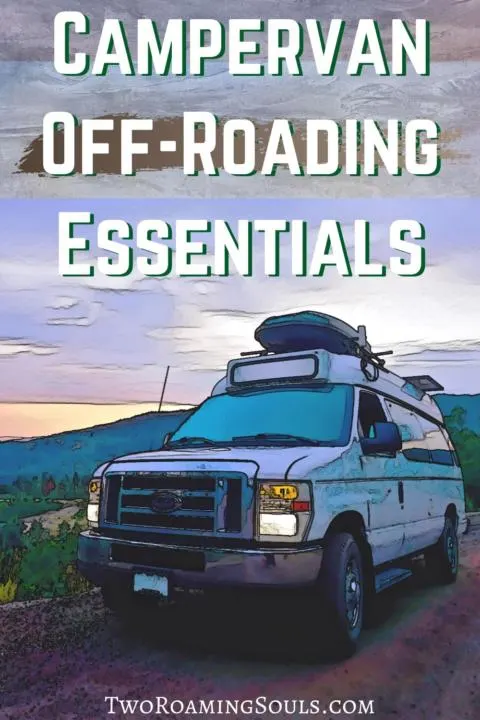
Check out the other Essential Off-Roading Safety and Recovery Gear everyone should have.
Help Share ‘Airing Down Tires For Camper Vans’ On Pinterest!
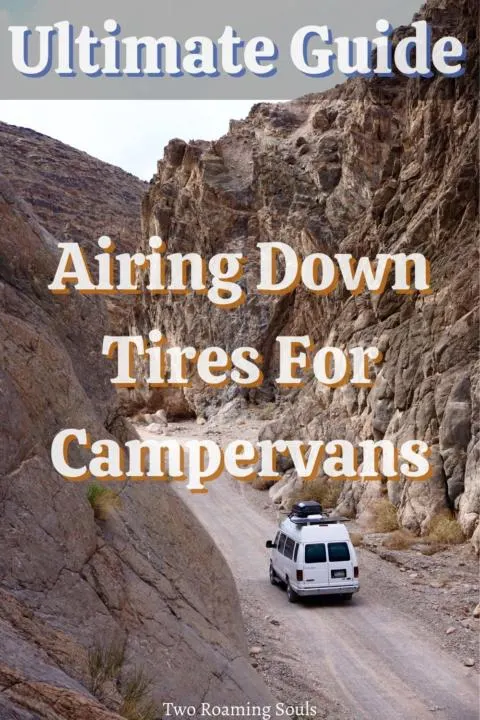
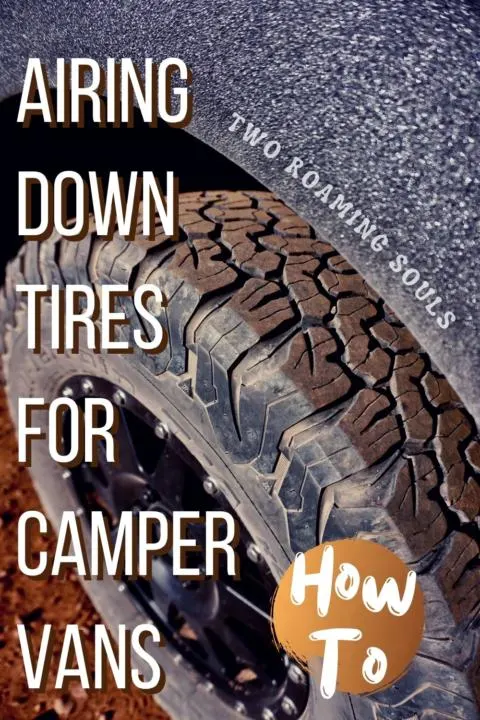


Titus Canyon | Ultimate Guide To Death Valley's Epic Canyon Road - tworoamingsouls
Wednesday 31st of March 2021
[…] lots of sharp rocks, so it’s highly recommended to have a full-size spare tire. We also aired down our tires to help with ride-smoothness and […]